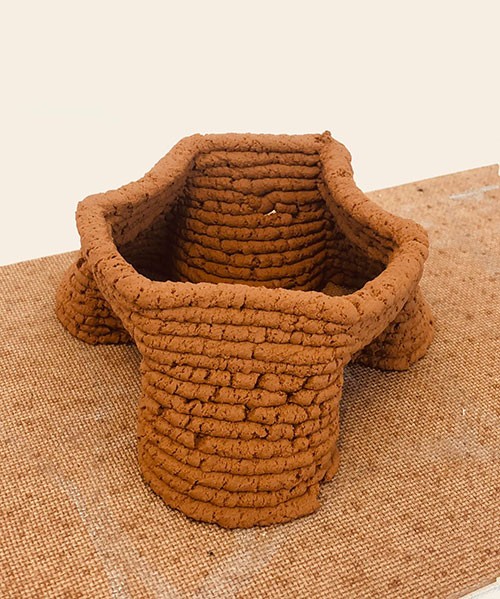The construction industry is currently facing two major challenges: the demand for sustainable infrastructure and the need to repair deteriorating buildings, bridges and roads. While concrete is the material of choice for many construction projects, it has a large carbon footprint, resulting in high waste and energy expenditure. Today, researchers report progress toward a sustainable building material made from local soil, using a 3D printer to create a load-bearing structure.
The researchers will present their results today at the American Chemical Society (ACS) Fall 2020 Virtual Meeting & Expo. ACS is holding the meeting through Thursday. It features more than 6,000 presentations on a wide range of science topics.
“The environmental impact of the construction industry is an issue of growing concern,” says Sarbajit Banerjee, Ph.D., the project’s principal investigator. “Some researchers have turned to additive manufacturing, or building structures layer by layer, which is often done with a 3D printer. That advance has begun to transform this sector in terms of reducing waste, but the materials used in the process need to be sustainable as well.”
For example, construction projects using extruded layers of concrete have highlighted the potential of additive manufacturing for building structures quickly and cheaply. However, concrete manufacturing is responsible for approximately 7% of carbon dioxide emissions according to the International Energy Agency, and cannot be recycled.
“Historically, humans used to build with locally sourced materials, such as adobe, but the move to concrete has raised many environmental issues,” says Aayushi Bajpayee, a graduate student in Banerjee’s lab at Texas A&M University. She is presenting the work at the meeting. “Our thought was to turn the clock back and find a way to adapt materials from our own backyards as a potential replacement for concrete.”
An advantage to using local soil in construction is that the materials would not need to be manufactured and transported to the building site, reducing both costs and environmental damage. Banerjee and Bajpayee also say that additive manufacturing with soil could one day be used beyond Earth, to create settlements on the moon or even Mars.
Soil is typically classified by the layers of materials it comprises, beginning with the top organic layer where plants grow and ending at the hard bedrock of the earth’s crust. Beneath the initial organic layer is clay, which gives soil its plastic, moldable character that the researchers capitalized on in their project.
The researchers began by collecting soil samples from a colleague’s backyard and tailoring the material with a new environmentally friendly additive so that it would bind together and be easily extruded through the 3D printer. Because soils vary greatly by location, their aim was to have a chemistry “toolkit” that could transform any type of soil into printable building material. From there Bajpayee built small-scale test structures, cubes measuring two inches on each side, to see how the material performed when extruded into stacked layers.
The next step was to ensure that the mixture is load bearing, meaning that it will stand up to the weight of the layers but also other materials used in construction such as rebar and insulation. To help with this, the researchers strengthened the clay mixture by “zippering” the microscopic layers on its surface to prevent it from absorbing water and expanding, which would compromise the printed structure. With this method, the researchers showed that the material could hold twice as much weight as the unmodified clay mixture.
Next, the team plans to improve the soil’s load-bearing capabilities in order to scale up their test structures and get as close to a replacement for concrete as possible. In addition, they are gathering data to see whether these 3D printed structures are as environmentally friendly as they envision, especially in terms of carbon footprint and recycling potential. Once they have a better picture of the chemistry, functionality and feasibility of building with local soils, they plan to further explore how this technology can be used beyond our own planet.
The American Chemical Society (ACS) is a nonprofit organization chartered by the U.S. Congress. ACS’ mission is to advance the broader chemistry enterprise and its practitioners for the benefit of Earth and its people. The Society is a global leader in providing access to chemistry-related information and research through its multiple research solutions, peer-reviewed journals, scientific conferences, eBooks and weekly news periodical Chemical & Engineering News. ACS journals are among the most cited, most trusted and most read within the scientific literature; however, ACS itself does not conduct chemical research. As a specialist in scientific information solutions (including SciFinder® and STN®), its CAS division powers global research, discovery and innovation. ACS’ main offices are in Washington, D.C., and Columbus, Ohio.
